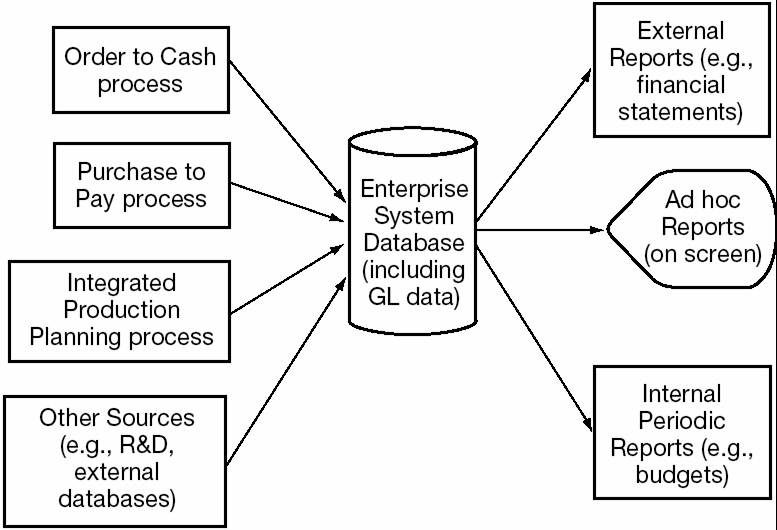

DBMS Reporting Tools
Business reporting tools pull information from databases and generate preformatted reports, such as regular updates on sales.
Business Reporting is the information a company provides to help users with capital allocation decisions about a company. It includes a number of different elements.
Who are the "users"?
Users are investors and creditors, including potential investors and creditors, and their advisors that use business reporting as a basis for their capital-allocation decisions.
What is "capital allocation"?
Capital Allocation The process of determining how and at what cost money is allocated among companies.
These Users need certain Types of information:
1. Financial and non-financial data.
2. Management's analysis of financial and non-financial data.
3. Forward-looking information.
4. Information about management and shareholders.
5. Background about a company.
How does this information help users meet their objectives?
This leads us to the 10 elements of a model of business reporting.
* Financial and non-financial data
1) Financial statements and related data
2) High-level operating data and performance measures that management uses to manage the business
* Management's analysis of the financial and non-financial data
3) Reasons for changes in the financial, operating and performance-related data, and the identity and past effect of key trends
* Forward-looking information
4) Opportunities and risks, including those resulting on key trends
5) Management's plans, including critical success factors
6) Comparison of actual business performance to previously disclosed opportunities, risks, and management's plans
* Information about management and shareholders
7) Directors, management, compensation, major shareholders, and transactions and relationships among related parties
*Background about the company
8) Broad objectives and strategies
9) Scope and description of business and properties
10) Impact of industry structure on the company
Just to be clear, what are the functions of the Business Reporting Process?
Functions of Business Reporting Process:
• Accumulating data, classifying data, and recording data.
• Providing for generation of both ad hoc and predetermined business reports to support operational and strategic decision making.
• Preparing general-purpose, external financial statements.
• Generating Web-based forms of key business reporting information for dissemination via the Internet.
For more information on Business Reporting see the following websites. (These websites are powerpoint presentations)
The Business Reporting (BR) Process by Charlie Cook:
http://ksuweb.kennesaw.edu/~kschwaig/ch14.ppt
General Ledger and Business Reporting (GL/BR):
www.swcollege.com/acct/gelinas/gelinas_5e/ppt/14.ppt
Financial information on the internet is easier to access data than from hard copy and finding the information requires precise searches. So in comes the eXtensible Business Reporting Language (XBRL). XBRL was built upon the eXtensible Markup Language (XML) and allows for communication of financial information. More information on this topic is given in the following website:
www.xbrl.org.au/training/NSWWorkshop.ppt